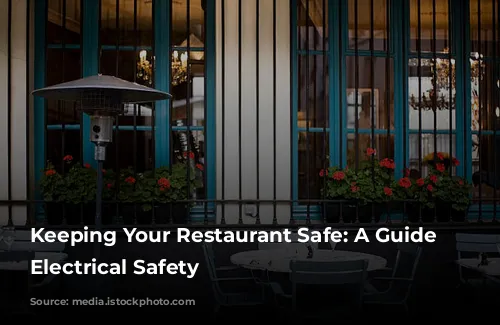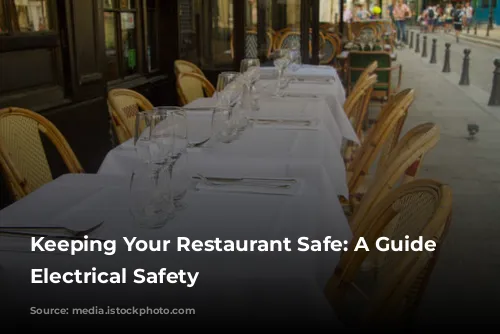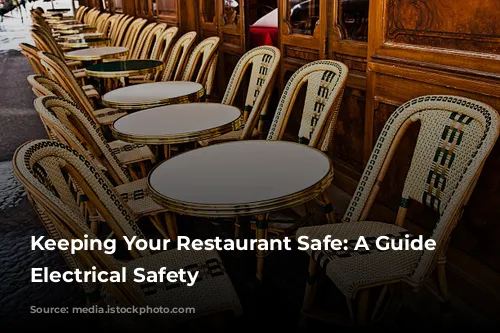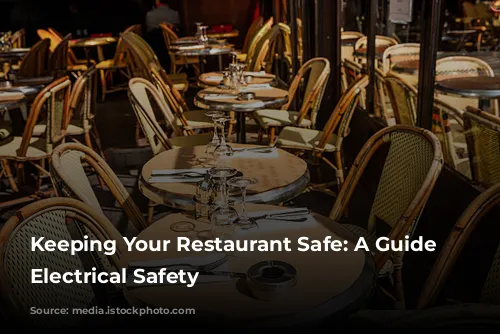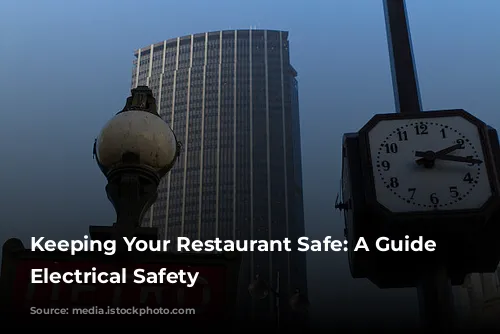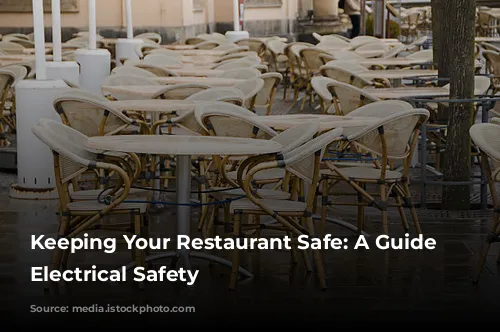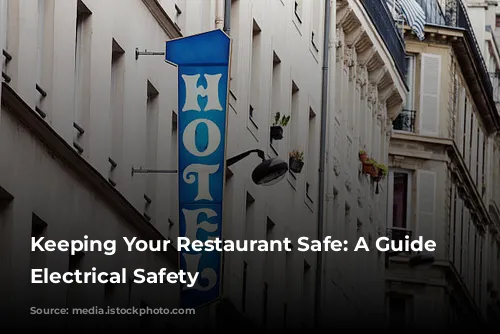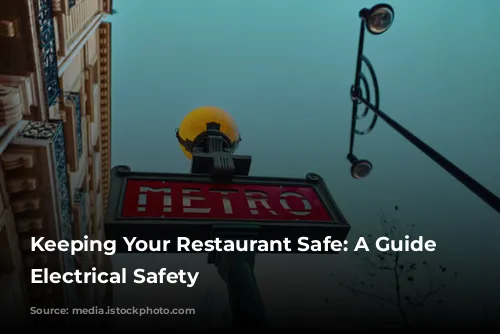Electricity is the lifeblood of your restaurant, powering everything from your ovens to your lights. But with this reliance comes a responsibility to ensure electrical safety, both for your staff and your customers. This article will walk you through common electrical hazards in restaurants, practical steps to keep things safe, and how to stay compliant with electrical codes.
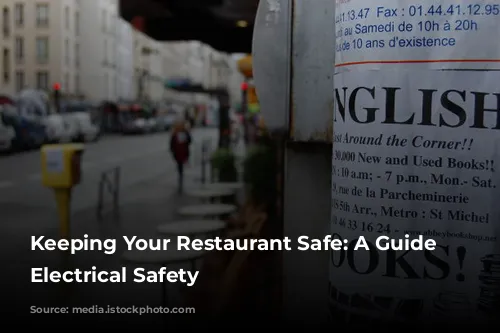
Common Electrical Hazards in Restaurants
Imagine a busy kitchen bustling with activity. The air is filled with the sounds of sizzling food and the clanging of pots and pans. This vibrant scene is powered by electricity, but it also presents unique challenges.
Faulty wiring, like aging or damaged cables, is a major concern. It can lead to dangerous situations like electrical fires or shocks. Overloaded circuits are another issue, especially in kitchens with multiple appliances plugged in at the same time. This can lead to tripped breakers or even malfunctions. Improper equipment use, like using damaged or incompatible electrical devices, further increases these risks.
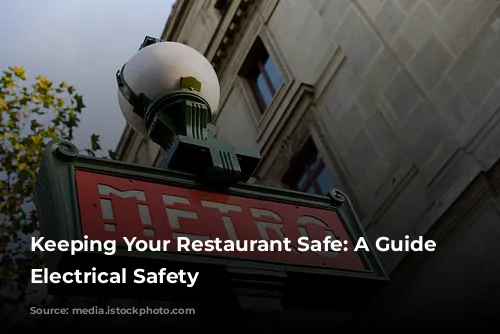
Protecting Your Restaurant from Electrical Hazards
The good news is that you can take proactive steps to keep your restaurant safe.
Regular Electrical Inspections and Maintenance
It’s crucial to schedule regular inspections by qualified electricians. They can identify potential issues like faulty wiring or overloaded circuits and recommend necessary repairs.
Compliance with Electrical Codes
Following electrical codes is a vital step in ensuring safety. In Canada, the Canadian Electrical Code (CEC) sets the standards for electrical installations.
Here are some key steps to stay compliant:
-
Stay Informed: Keep up-to-date with the latest CEC updates and amendments. This ensures you’re using current standards and requirements.
-
Hire Licensed Electricians: Partner with licensed electricians who are knowledgeable about local codes and can perform installations and repairs according to the CEC.
-
Follow Installation Guidelines: Strictly adhere to the installation guidelines outlined in the CEC. This includes proper wiring methods, grounding practices, and placement of electrical equipment.
-
Obtain Permits: Don’t forget to obtain necessary permits for electrical installations and modifications from your local authorities. This ensures compliance with regulatory standards.
-
Conduct Inspections: Schedule regular inspections by qualified professionals to ensure your electrical systems and equipment meet code requirements and address any deficiencies promptly.
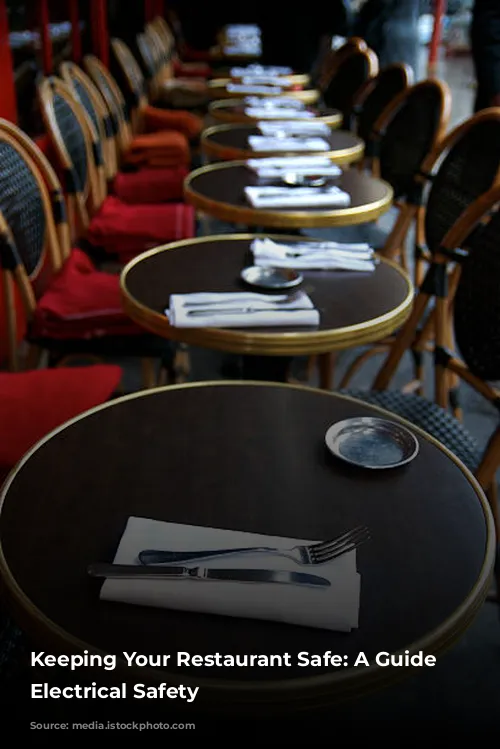
A Comprehensive Electrical Safety Checklist
Here’s a checklist to keep electrical safety top of mind:
- Regular Inspections: Have a licensed electrician assess the condition of your wiring, outlets, and electrical panels.
- Spotting Damage: Look for signs of wear, damage, or corrosion in electrical components.
- GFCI Outlets: Make sure GFCI (Ground Fault Circuit Interrupter) outlets are installed in areas prone to moisture, like kitchen prep areas.
- Equipment Maintenance: Establish a routine maintenance schedule for all kitchen appliances and electrical devices.
- Clean Ventilation Systems: Regularly clean and inspect ventilation systems to reduce the risk of dust buildup, which can pose fire hazards.
- Staff Training: Train all staff members on proper electrical safety procedures, including how to use equipment safely and respond to electrical emergencies.
- Clear Signage: Post clear signage indicating the location of electrical panels and emergency shut-off switches.
- Reporting Issues: Implement protocols for reporting electrical issues or hazards promptly to management or maintenance personnel.
- Proper Installation: Ensure kitchen equipment is installed according to manufacturer specifications and local electrical codes.
- Avoid Extension Cords: Avoid using extension cords or power strips for high-powered appliances.
- Clean Ventilation Hoods: Regularly inspect and clean ventilation hoods to prevent grease buildup, which can pose fire risks.
- Emergency Kit: Maintain a readily accessible emergency kit with flashlights, first aid supplies, and emergency contact information.
- Fire Drills: Conduct regular fire drills to ensure staff members know how to respond to electrical fires or emergencies.
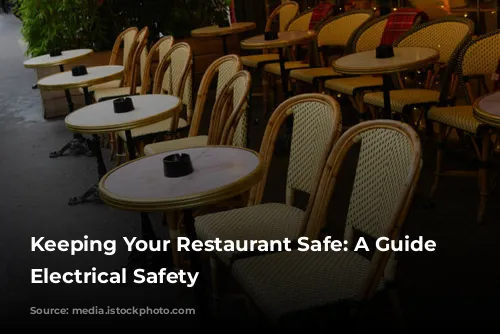
Prioritizing Electrical Safety: A Shared Responsibility
Prioritizing electrical safety is crucial for a secure and comfortable environment for your employees and customers. By understanding common hazards, implementing this checklist, and staying compliant with electrical codes, you can mitigate risks and promote a culture of safety. Remember, electrical safety is a shared responsibility that benefits everyone involved in the restaurant industry.
